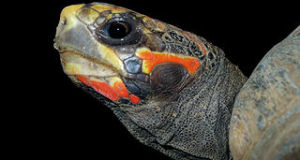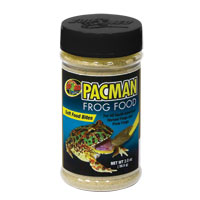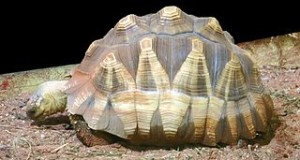The Influence of Hobby and Food-Species Research
As compared to the aquarium hobby, the keeping of reptiles and amphibians in captivity is a relatively new development. Far more time and research has gone into the development of products designed for fish and aquatic invertebrates than is the case for herps, and we know a great deal more about keeping and breeding them in captivity. Also, commercially valuable species such as salmon, tilapia, clams and shrimp have generated a great deal of husbandry-oriented research, much of which has found application in the aquarium hobby.
Fortunately, the needs of many amphibians and reptiles parallel, and in some cases closely match, those of certain fishes. Many of the fine products designed for aquarists are therefore of great value to reptile and amphibian enthusiasts.
Keeping Amphibians and Fishes Together
The Aquarium Fish Dish is a valuable tool for those keeping African clawed frogs and newts along with fishes.
Fishes that feed at the aquarium’s surface and mid-water level nearly always consume blackworms and other live foods, as well as sinking pellets, before resident amphibians are even aware that it’s feeding time. Live food specialists, such as dwarf African clawed frogs, rarely do well with fish for this reason, despite otherwise co-existing well with many species and making for an interesting tank. The Fish Dish allows you to specifically target bottom feeding amphibians in mixed-species aquariums.
Limiting Choke Hazards
I came upon the idea of using the Cone Worm Feeder many years ago when raising axolotl and red-spotted newt larvae. I fed them largely upon live blackworms, which always clump together, even when finely chopped. I found that larvae of both species sometimes choked to death while trying to swallow the tightly-packed worm balls.
The worm feeder dispenses live worms individually, and has proven very useful to me in raising a wide variety of salamander larvae. I use it with adult salamanders as well, especially the smaller species such alpine newts.
Certain fish medications work well with amphibians…please see my article:
Methylene Blue As A Treatment for Aquatic Reptiles and Amphibians
 That Reptile Blog – Reptile, Amphibian and Exotic Pet Care and Information
That Reptile Blog – Reptile, Amphibian and Exotic Pet Care and Information



